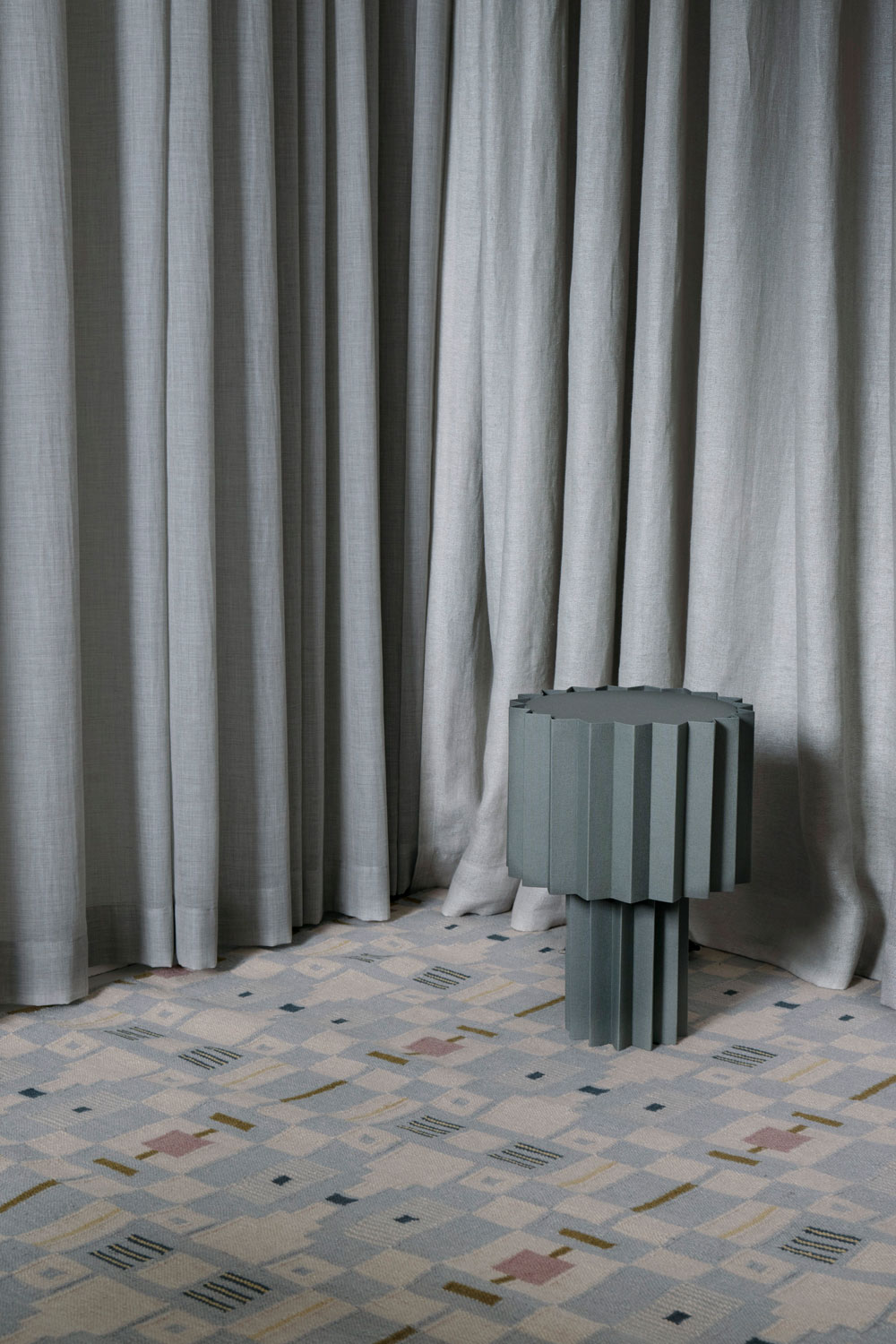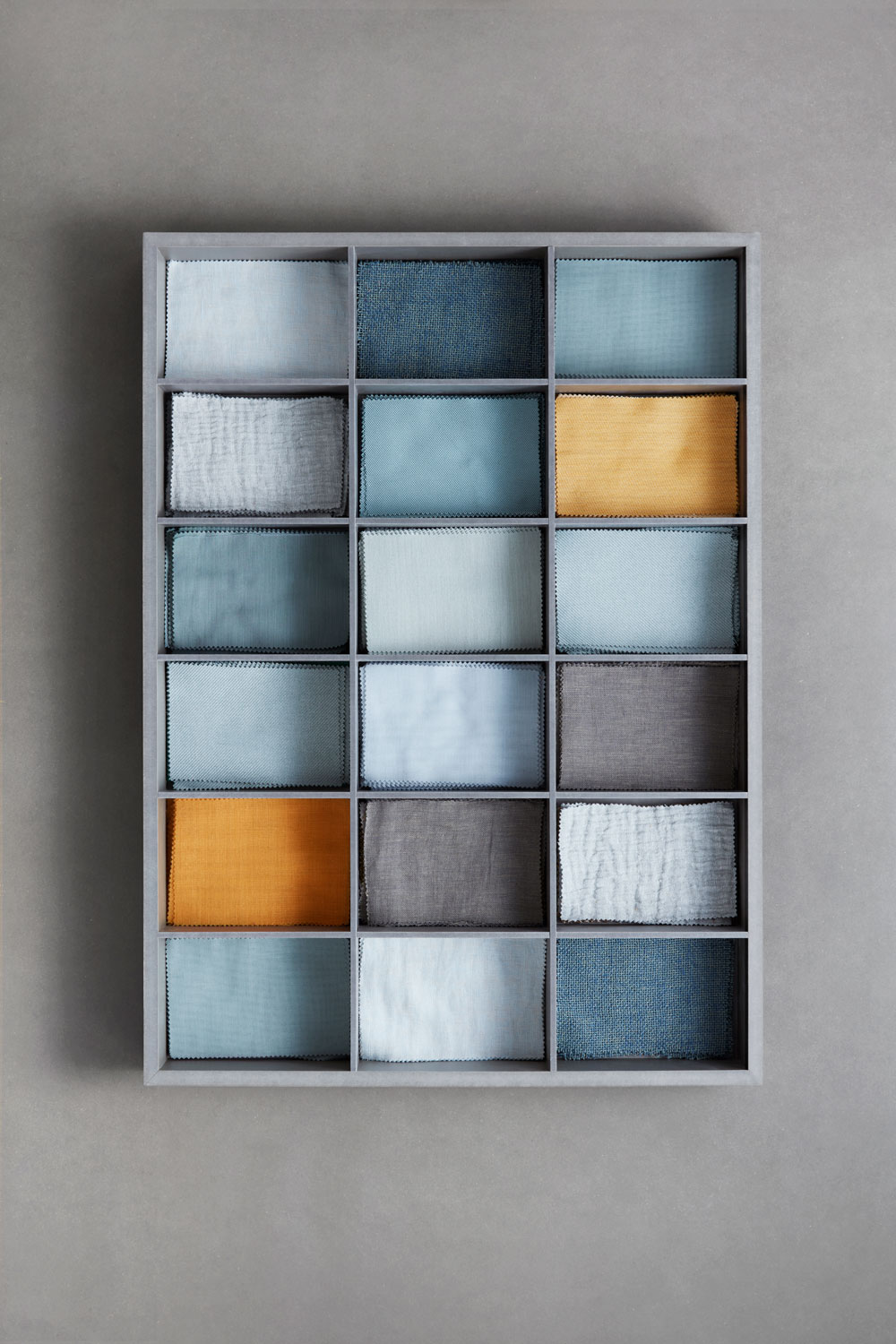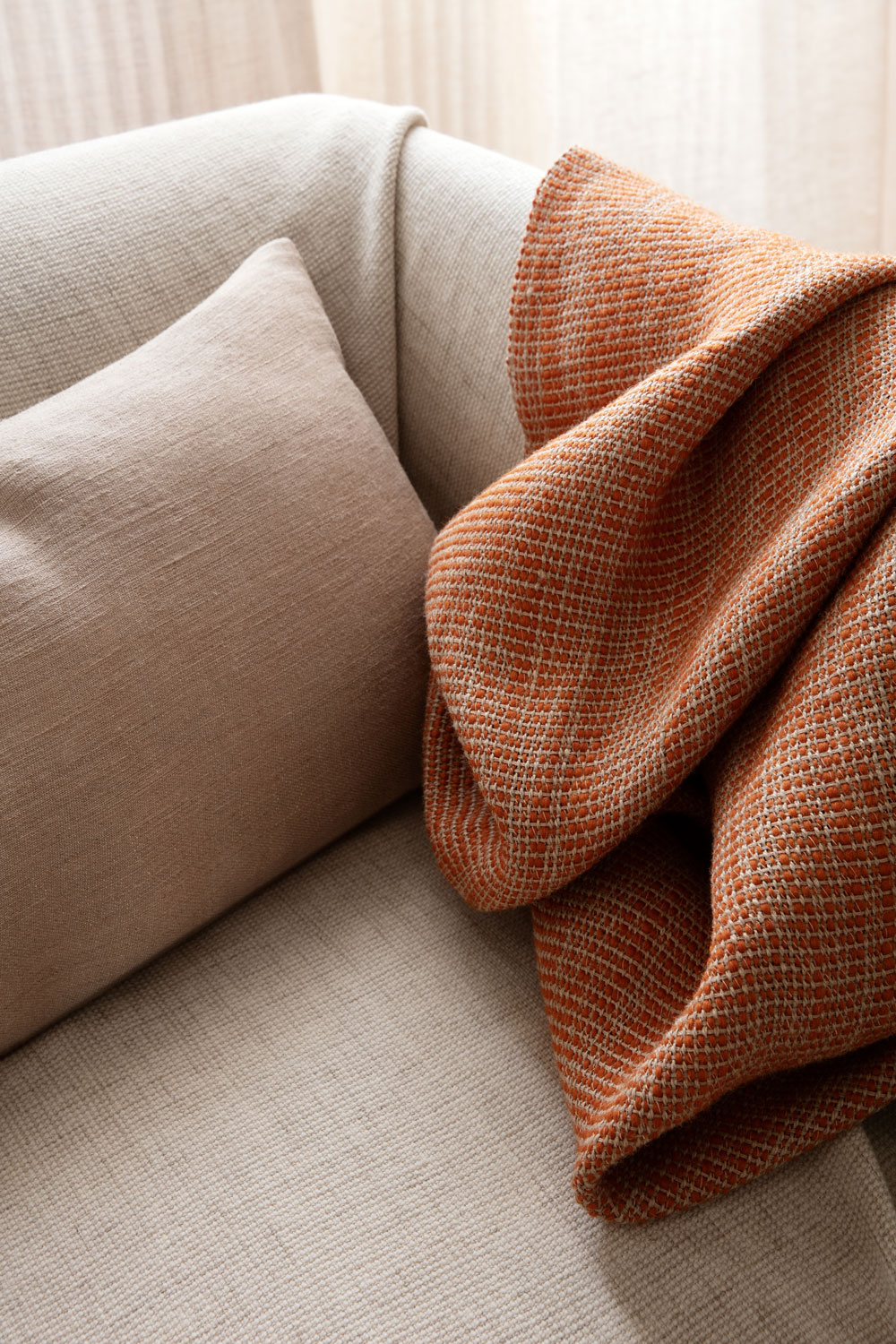Anna Boustedt of Astrid
How textiles turn any space into a place you want to linger
Designing a space that feels just right isn’t always easy – especially when you’re balancing style with functionality. Whether it’s an office that needs to feel more welcoming or a hotel that’s missing that extra layer of comfort, the right textiles can make all the difference. They soften noise, add warmth and create flexible boundaries without putting up walls.
We spoke with Anna Boustedt, founder of Astrid, a Swedish company that has redefined how textiles are used across the Nordic region. Known for their versatility and customisation, Astrid’s textiles are helping create spaces that are not only visually striking but also comfortable and practical. Here’s how.
Photography by Astrid
Share



“We feel designs should be layered, cohesive and effortless.”
Q:
Astrid has rapidly become a significant name in the textile industry since 2003. What do you attribute this success to?
A:
Astrid’s success comes from offering designers and architects large, versatile collections that fit their needs perfectly. By focusing on plain fabrics with standout colours and combining unexpected shades, Astrid delivers fresh, distinctive choices. Clients love the tone-on-tone combinations and complementary textures, which create designs that are both functional and beautiful. We feel designs should be layered, cohesive and effortless.
Many fabrics are available in wider widths, adding flexibility for large-scale projects. The Textile Lab allows designers to build custom palettes, making it easier to bring unique visions to life. Fast deliveries and tailored service ensure that textiles arrive on time and fit the project perfectly, making the entire process smoother for everyone.
“By carefully selecting textiles, you can balance noise levels while also visually dividing spaces without constructing physical barriers.”
Q:
A:
Textiles play a crucial role in creating environments that are both functional and aesthetically pleasing. In workplaces, they create warmth and softness, helping to humanise otherwise sterile spaces.
One major advantage is that textiles improve acoustics, which is essential for modern work environments where open-plan designs are common. By carefully selecting textiles, you can balance noise levels while also visually dividing spaces without constructing physical barriers.


“Use textiles creatively to define areas within the workspace.”
Q:
A:
1: Consider the functional properties of the textiles, such as providing privacy, reducing noise and enhancing acoustics. These qualities can significantly impact the atmosphere and productivity of the space.
2: Use textiles creatively to define areas within the workspace. They can help create zones or ‘rooms’ within open layouts, providing visual cues for different functions.
3: Once you’ve chosen a colour palette, work with textiles in the same colour but with different textures. This adds depth and interest, creating a warm, inviting environment without overwhelming the space.

“Increasingly, there’s a demand for spaces that feel less corporate and more like home.”
Q:
A:
Increasingly, there’s a demand for spaces that feel less corporate and more like home. This is where textiles can make a big difference, creating inviting environments while serving functional purposes.
For example, in open offices, there’s a growing need for fabrics that both divide and connect spaces. To meet this demand, we offer collections that include semi-transparent and opaque options in the same colour palette – like our Como/Lago and Nizza/Grasse collections – so designers can create cohesive yet flexible solutions.


“In hospitality, the focus is often on creating an experience – spaces that are inviting, comfortable and unique …”
Q:
A:
Yes, hospitality is a growing area for us, and it’s exciting to see our textiles being used in high-end projects. We’ve had the pleasure of collaborating with some remarkable hotels, including Ett Hem in Stockholm and 11 Howard in New York. These partnerships have certainly raised our profile in the hospitality industry.
In hospitality, the focus lies in creating an experience – spaces that are inviting, comfortable and unique – and textiles are a key part of achieving that. What sets us apart is the support we provide throughout the entire project, from initial design consultation to the final stages of implementation.

“We’re continuously exploring the latest innovations in recycling ...”
Q:
A:
At Astrid, sustainability is a priority, and we incorporate as much recycled material as possible into our new fireproof collections, using both pre-consumer and post-consumer sources. In our natural fiber collections, we focus on linen and more recently, hemp – both highly sustainable choices.
Since last year, hemp has become an increasingly significant part of our range due to its minimal environmental impact. Whenever possible, we also integrate recycled fibers from natural materials like wool and cotton. We are committed to avoiding blending natural fibers with fossil-based ones, ensuring recyclability at the end of the textile’s lifecycle. We’re continuously exploring the latest innovations in recycling, upcycling, reuse and staying aligned with new EU sustainability regulations.
Most of our production is based in Europe, primarily in Italy, which allows us to maintain strict control over quality and environmental standards. Clients who choose Astrid fabrics receive high-quality, responsibly produced textiles that are free from harmful substances, ensuring they meet the highest standards for both performance and environmental responsibility.


“Modern technology, especially computerised jacquard looms, has continuously revolutionised the process.”
Q:
How is technology influencing textile design and production at Astrid, and what are some recent innovations that we should be aware of?
A:
Weaving remains a largely traditional craft. Modern technology, especially computerised jacquard looms, has continuously revolutionised the process. The jacquard technique is still going strong, dating back to the early 19th century, it allows us to control individual warp threads, opening up endless possibilities for creating intricate patterns and textures. We love experimenting with this technology and all of its possibilities.
A great example using the jacquard loom is our 2022 launch, Avena. This collection demonstrates how we see fabric as ‘art by the metre’ – a modern take on tapestry that blends innovation with craftsmanship resulting in striking, versatile textiles.
One innovation we are closely exploring is how to use textile waste, such as discarded clothing and industrial cut-offs, to create new fibers. This initiative aims to reduce the reliance on virgin materials.
Discover how the right textiles can transform your space into something extraordinary. Contact us at info@escandi.se to explore the full potential and create a design that truly works for you.

